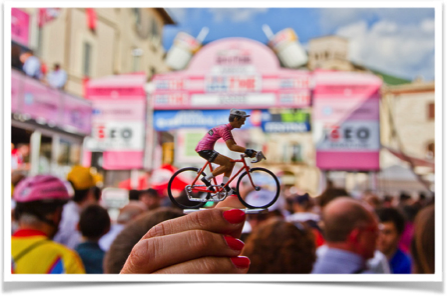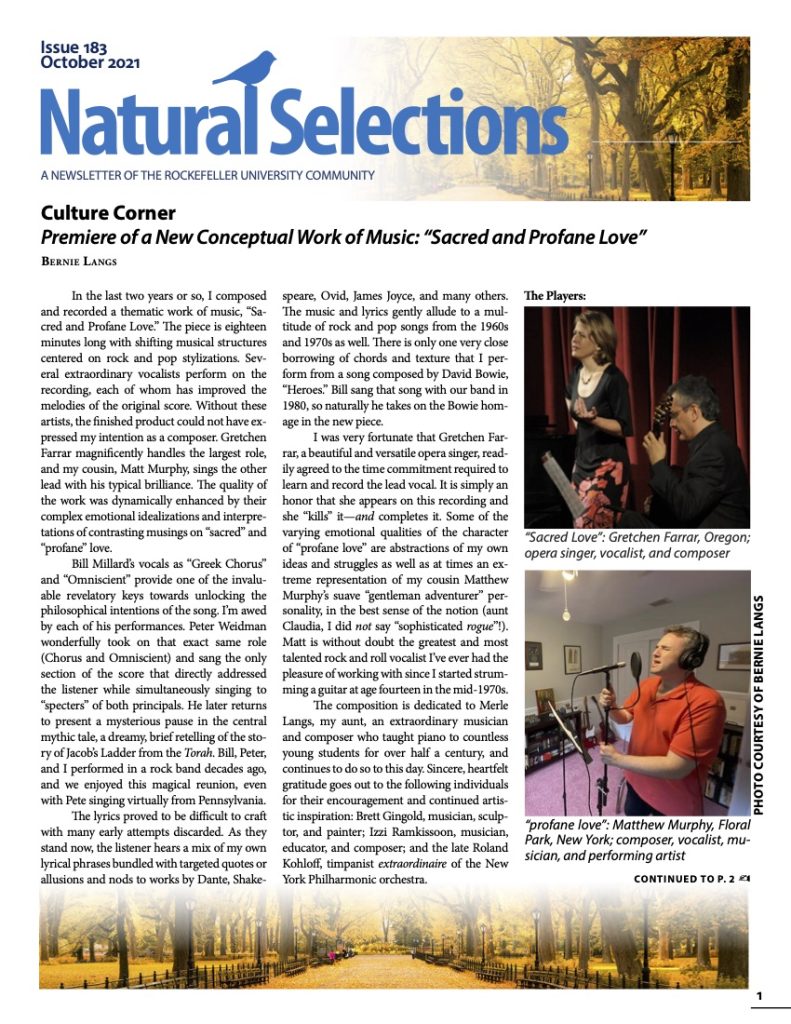Francesca Cavallo
The Giro d’Italia, or Tour of Italy, is one of the world’s most famous bicycle races. Twenty-two international teams compete for three weeks in a contest of racing tactics, willpower, and raw athleticism. The 2017 Giro is extra special: it’s the 100th race!
Even if you’re not a cycling enthusiast, you have probably heard about this multiple-stage bicycle race held in Italy every May, which, along with the Tour de France and Vuelta a España (collectively known as Grand Tours), represents the world’s most prestigious road bicycle race. Also, known as Corsa Rosa (Pink Race, because the race leader wears a pink shirt), Giro d’Italia was established in 1909, an idea of Tullio Morgagni, a journalist with the Gazzetta dello Sport newspaper. At the time, cycling was already a popular sport, with the first races having taken place in 1869.
The first Giro d’Italia left from Piazza Loreto in Milan on May 13, 1909. Overall, the first Giro consisted of eight stages, held three times a week, between May 13 and May 30, covering a total of 2,448 km. Since then, except for interruptions during World Wars I and II, the Giro d’Italia has taken place every year in May over the course of three weeks. Although the starting point varies every year, the arrival is always in Milan, the headquarters of Gazzetta dello Sport. In 1931, it was decided that the race leader needed to display a symbol that would make him instantly recognizable amid the dense pack of racers; thus, the iconic maglia rosa, pink jersey, was introduced.
The golden age of the Giro was between 1931 and 1950, when such cycling greats as five-time winner Fausto Coppi (il Campionissimo) champion of champions and his historic rival three-time winner Gino Bartali (nicknamed Ginettaccio) competed and inflamed fans, dividing Italy into supporters of one or the other. Between 1956 and 1978, the race lead was taken by foreigners, especially the Belgian Eddy Merckx, who won the Giro five times in seven years and earned the nickname “The Cannibal” because, it was said that he wouldn’t let anyone else win.
The 1990s saw the emergence of Marco Pantani, who became a real sports idol in Italy, winning the Giro d’Italia in 1998 (the same year, he won the Tour de France, the last cyclist, and one of only seven, to win the Giro and the Tour in the same year). Nicknamed “il pirata” (the pirate) because of his shaved head and the bandana and earrings he always wore. Pantani is considered one of the best climbers of his era. In 1999, while leading the race, he was expelled due to irregular hematocrit values. He was accused of Erythropoietin, or EPO, use, which is thought to have led him into a depression from which he never fully recovered. He died of acute cocaine poisoning in 2004.
The latest years of the race have been dominated by the Spaniard Alberto Contador (one of only six riders to have won all three Grand Tours of road cycling), and Italian Vincenzo Nibali (like Contador, he has won all three Grand Tours). Since the beginning, Nibali has been nicknamed Lo Squalo (the shark) for his technique, which consists of always rushing to the attack, and for his Sicilian origins. Nibali is the current Giro d’Italia title holder, having won the 2016 race (he previously won the 2013 edition).
2017 marks a special year for the Giro d’Italia as it celebrates its 100th edition. Giro d’Italia 2017 will run from Friday, May 5th to Sunday, May 28th, from the island of Sardinia, to the heel of Italy’s boot, to the Alps. After leaving Sardinia, where the first three stages will take place, it will move to another island, Sicily. The Sicilian leg’s highlight will be the climb up the Etna volcano. The next day, the race will end in Nibali’s hometown of Messina. Giro d’Italia 2017 will continue through the heel, traversing Puglia’s Valle d’Itria, then proceeding north through Umbria’s Sagrantino wine country. Two stage starts will be Tuscany’s Ponte a Ema and Piedmont’s Castellania, birthplaces of Italian cycling greats Bartali and Coppi, respectively. The Apennines traverse will be followed by the Alps, with the climb of the famous Stelvio Pass. Then it’s the majestic Dolomites, which will involve some brutal climbs (stage 18 features five ascents!). Like every year, Giro d’Italia 2017 will conclude in Milan.
If you are inspired by Giro d’Italia and you are an active person I suggest that you bike across Italy. You will pedal to extraordinary art cities such as Venice, Florence, Lucca and Pisa. If you have enough time, add to this the rural landscapes of Veneto, Emilia-Romagna, Chianti and Maremma areas of Tuscany and you will have the best of Italy. One of the most popular bike tours in Italy is coast-to-coast cycling from the Adriatic coast in the east to the Tuscan coast line in the west. This bike route takes you form Marche through the Umbrian hills and onto the Tuscan mountains before descending to the Tuscany coastline. Along the way you can have a wine tasting at a family winery, observe the medieval art, and learn culinary secrets behind the incredible regional cooking.
Last but not least is the biking tour in Sardinia. The captivating island is famous for its beautiful beaches and the beautiful turquoise waters of the Tyrrhenian Sea. Sardinia’s best kept secret is its amazing network of immaculately scenic and quiet roads that are perfect for cycling. The island’s rugged and remote mountainous interior boasts rivers, lakes, archaeological sites and an amazing variety of wildlife such as flamingos, falcons, and wild boar.


